With only three weeks remaining before their April 11, 1970 launch, the Apollo 13 prime crew of Commander James A. Lovell, Command Module Pilot (CMP) Thomas K. “Ken” Mattingly, and Lunar Module Pilot (LMP) Fred W. Haise, and their backups John W. Young, John L. “Jack” Swigert, and Charles M. Duke, continued training for their 10-day Moon landing mission. During the flight, Lovell and Haise planned to make a landing in the Fra Mauro region of the Moon to conduct geologic surveys and set up scientific experiments during two space walks while Mattingly remained in lunar orbit conducting photographic surveys of the Moon. Lovell, Haise, Young and Duke completed their last geology field trip, Lovell and Young trained for the Moon landing itself, and all six spent time in the spacecraft simulators rehearsing various phases of the upcoming mission. Preparations for the next flight, Apollo 14, also continued, while halfway around the world, the Apollo 12 astronauts and their wives were nearing the end of their goodwill tour with several stops in Asia.
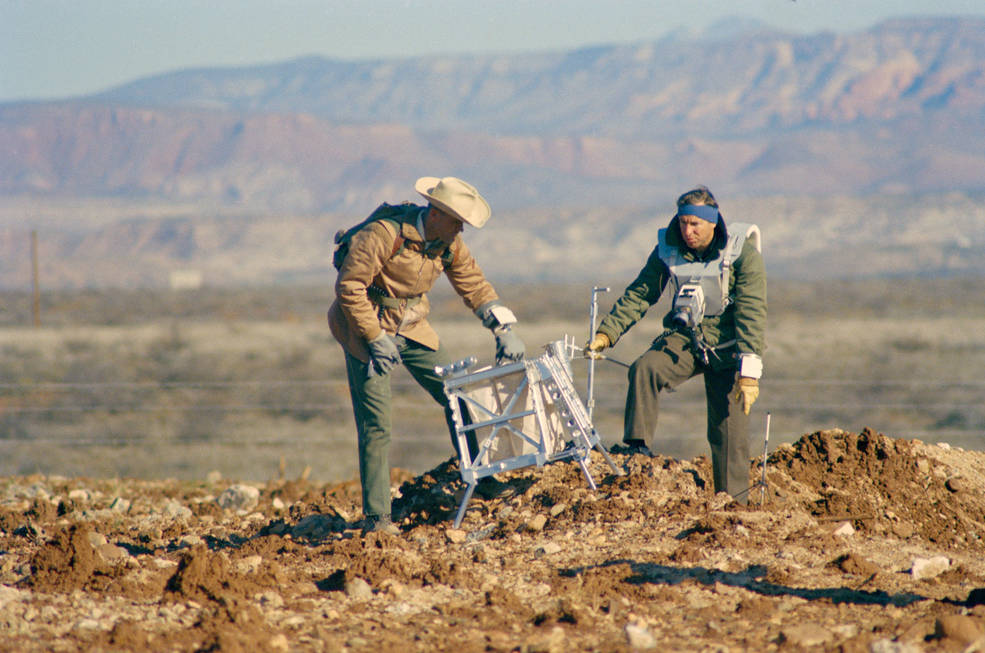
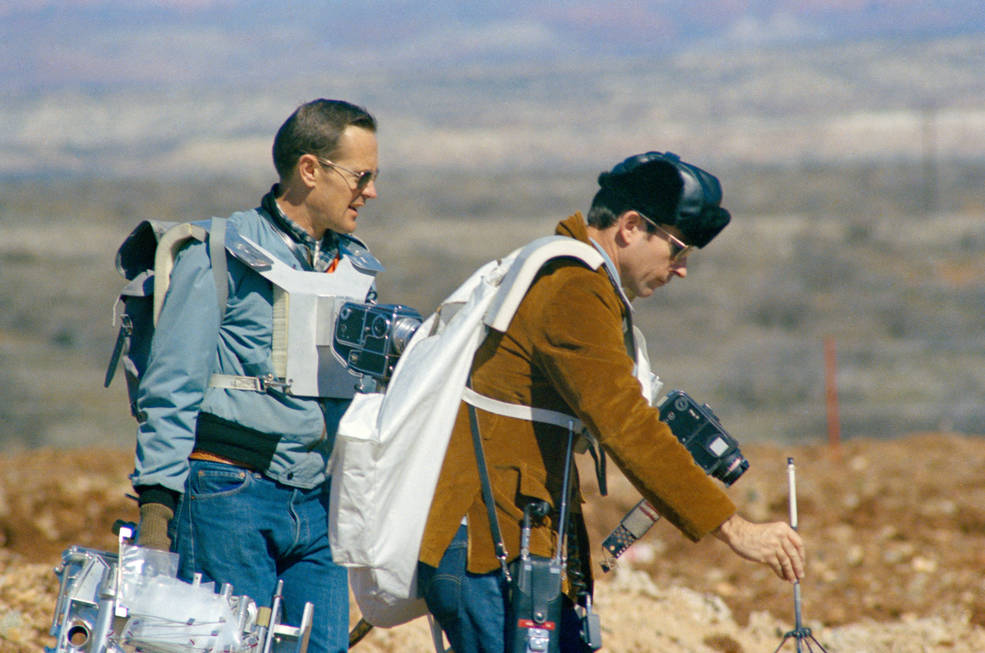
Left: Haise (left) and Lovell during the geology field trip to Arizona.
Right: Duke (left) and Young during the geology field trip to Arizona.
The Apollo 13 astronauts’ final geology training trip March 15 and 16 resembled a simulation more than just field instruction. The United States Geological Service had created an artificial crater field at Black Mesa outside Flagstaff, Arizona, making it an ideal site for lunar traverse training. Lovell, Haise, Young and Duke, accompanied by a team of geologists, used the same equipment they would on the Moon during their spacewalks and had open communications links with astronaut Anthony W. “Tony” England acting as capsule communicator in Mission Control at the Manned Spacecraft Center (MSC), now the Johnson Space Center in Houston. During the simulated traverses, the astronauts reported their observations, took photographs and collected samples just as they planned to do on the lunar surface.
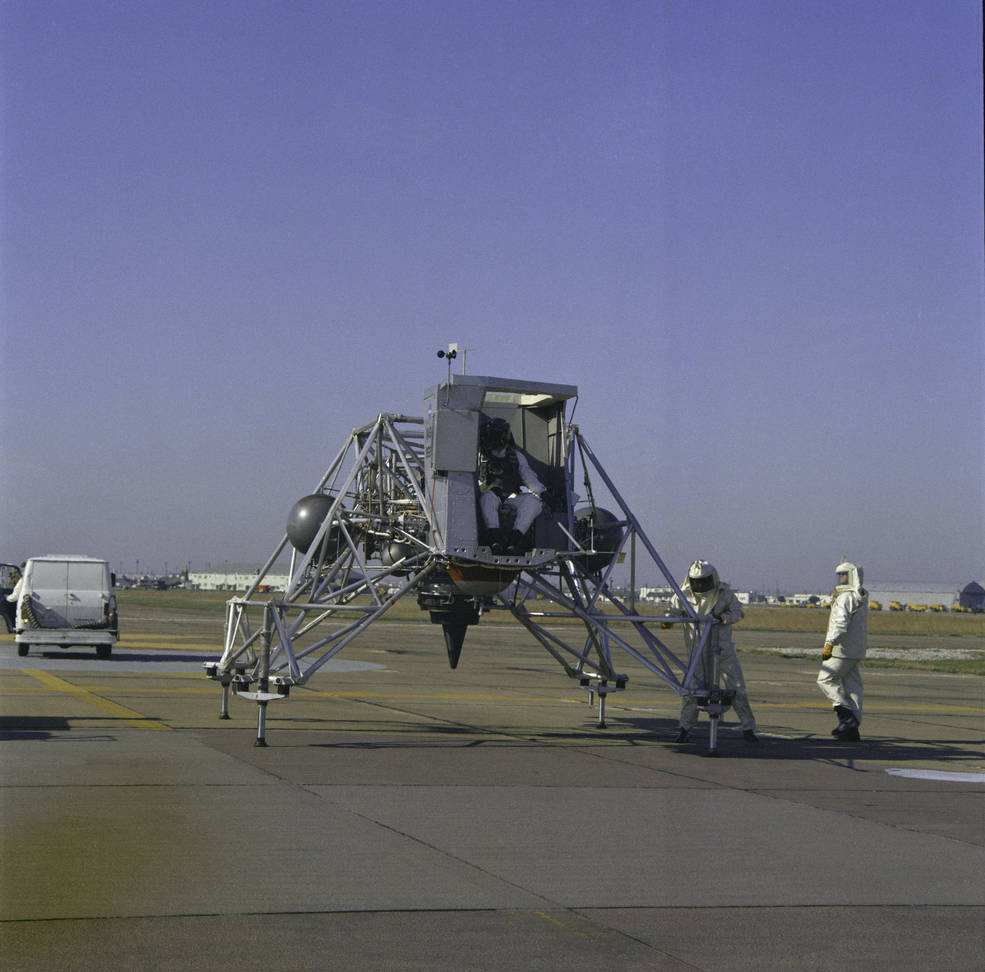
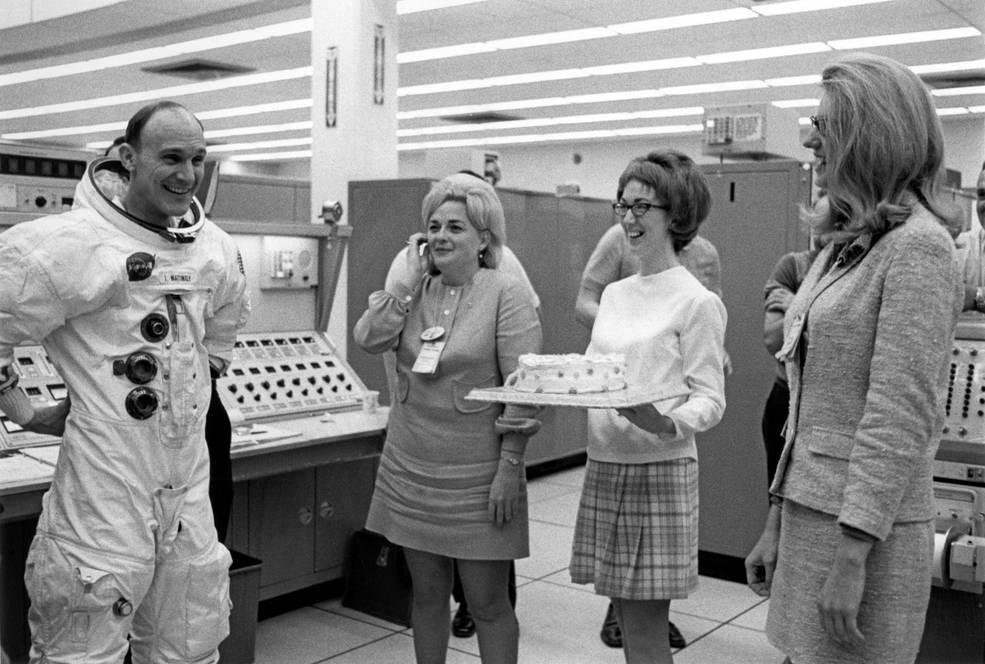
Left: Young after a flight in the LLTV.
Right: Mattingly celebrated his 34th birthday at KSC.
Apollo mission commanders and their backups practiced for the final few hundred feet of the descent using the Lunar Landing Training Vehicle (LLTV) at Ellington Air Force Base near MSC. Lovell completed his LLTV training missions earlier in March and Young flew several flights in the second half of the month. All the crewmembers spent time in the Command Module and Lunar Module simulators at MSC and at Kennedy Space Center (KSC). While at KSC on March 17, between simulator runs several employees helped Mattingly celebrate his 34th birthday, complete with birthday cake.
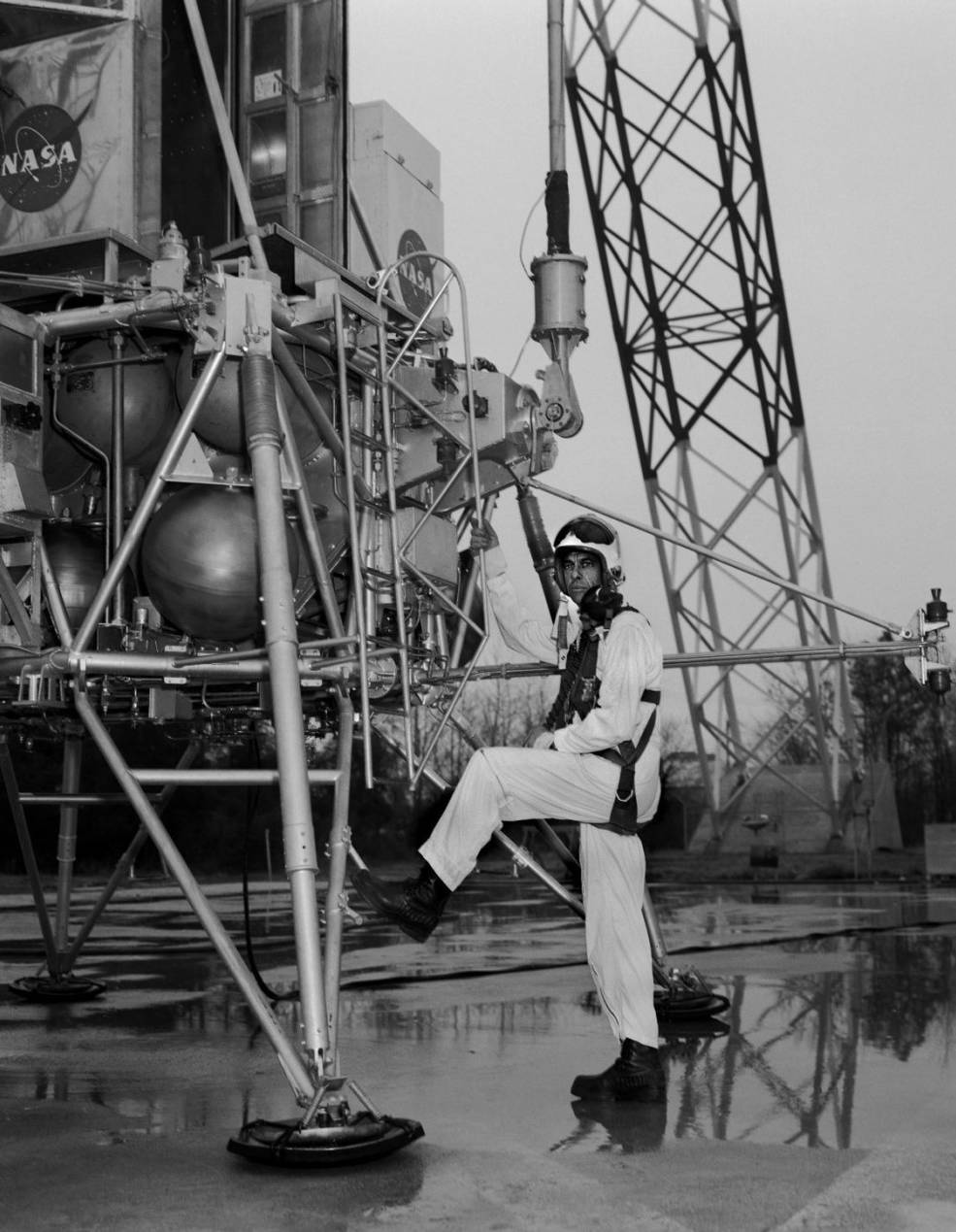
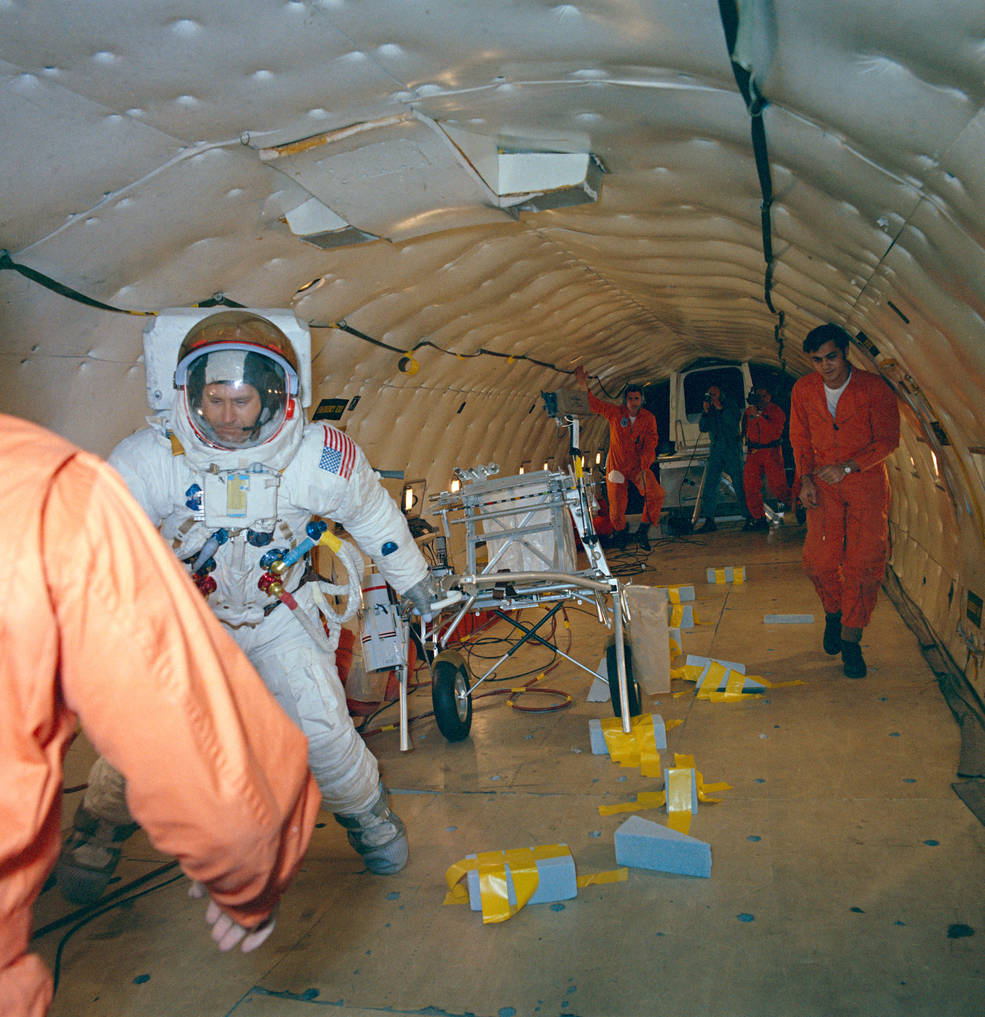
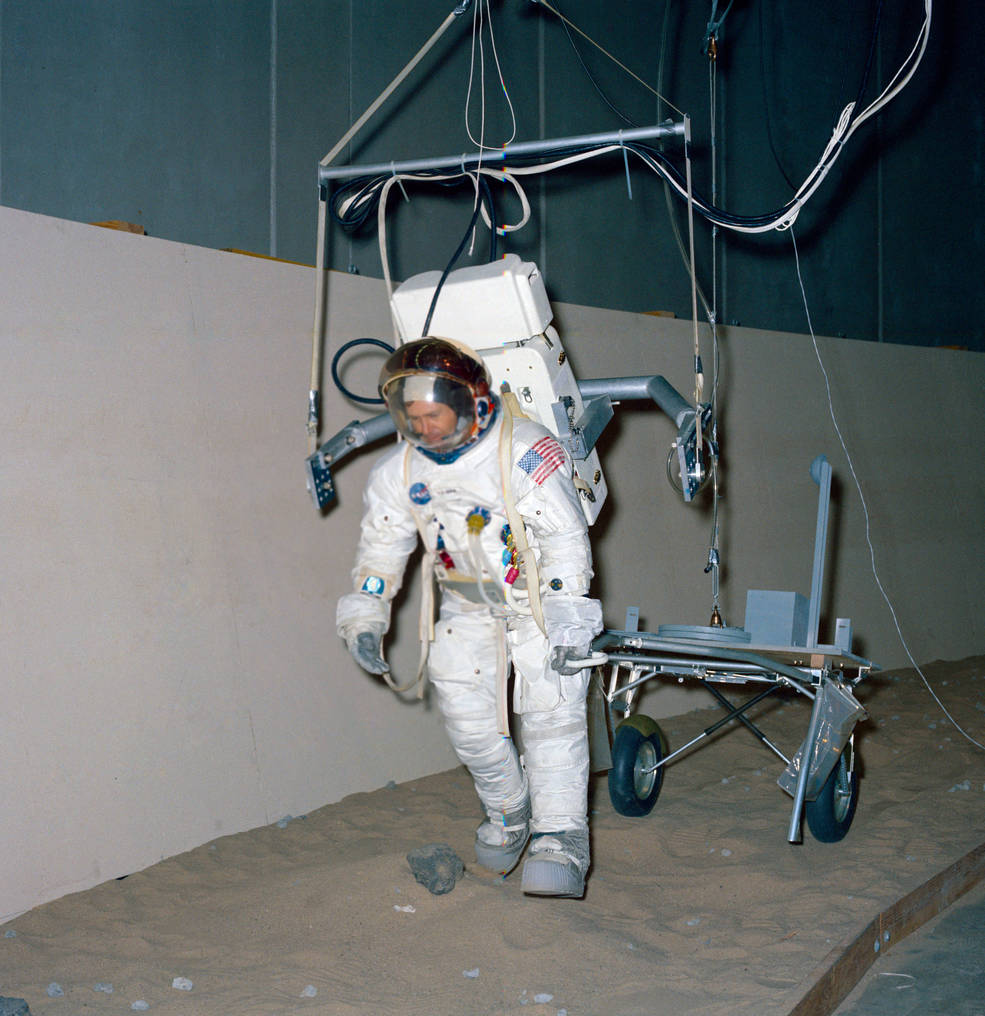
Left: Shepard at the LLRF at Langley. Middle: Pogue testing the MET during
KC-135 parabolic flights. Right: Pogue testing the MET in the POGO facility.
Apollo 14 astronauts Commander Alan B. Shepard, CMP Stuart A. Roosa, and LMP Edgar D. Mitchell and their backups Eugene A. Cernan, Ronald E. Evans, and Joe H. Engle continued training for their mission. In addition to the LLTV, Apollo astronauts also had at their disposal the Lunar Landing Research Facility (LLRF) at NASA’s Langley Research Center in Virginia, for practicing Moon landings. The LLRF consisted of a 400- by 230-foot A-frame structure with a gantry used to manipulate a full-scale Lunar Excursion Module Simulator (LEMS). The LLRF simulated piloting the Lunar Module in the final 150 feet of the descent to the lunar surface and was available to train both Commanders and LMPs and their backups. Shepard, Mitchell, Cernan and Evans all completed flights in the LLRF in February and March 1970. The Apollo 14 astronauts were the first to make use of the Modular Equipment Transporter (MET), nicknamed the “Rickshaw” because of its appearance, a golf-cart like wheeled conveyance to transport tools and collected lunar samples. Apollo 14 support astronaut William R. Pogue tested the MET prototype in simulated one-sixth lunar gravity during parabolic aircraft flights and using the POGO suspension facility that also simulated walking on the Moon.
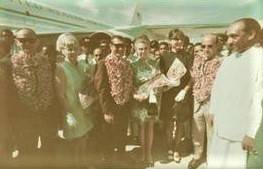
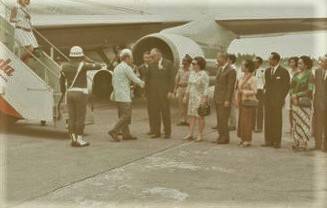
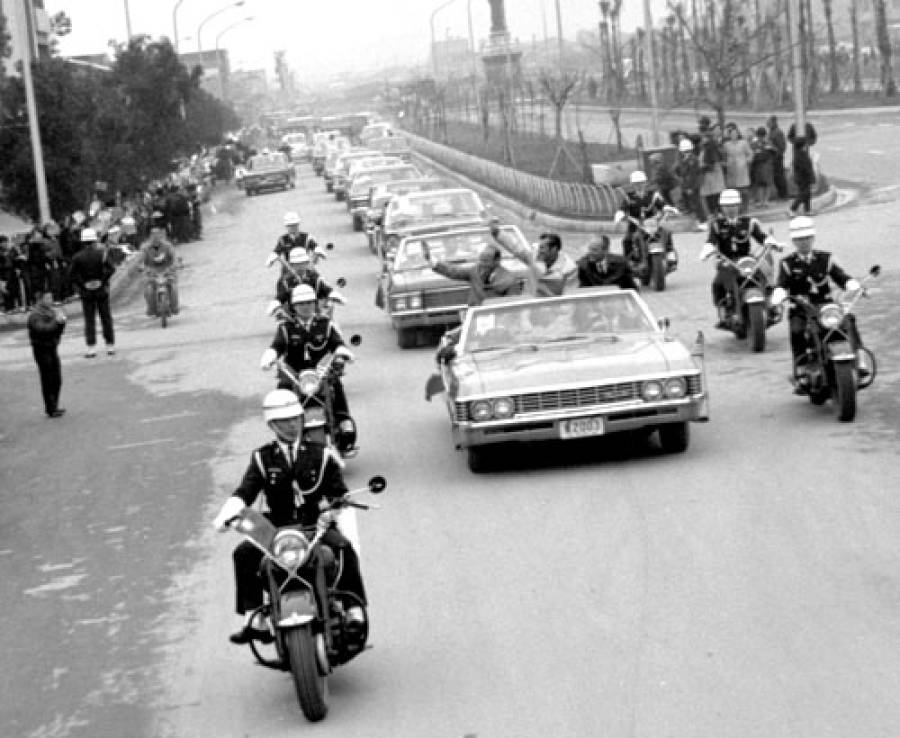
Left: Dignitaries greet the Apollo 12 astronauts and their wives in Colombo.
Middle: Apollo 12 astronauts and their wives arrive in Jakarta.
Right: Apollo 12 astronauts in the motorcade in Taipei.
Apollo 12 astronauts Charles “Pete” Conrad, Richard F. Gordon, and Alan L. Bean, accompanied by their wives and NASA and State Department officials, continued their 38-day “Bullseye” Presidential Goodwill World Tour. After multiple stops in Latin America, Europe and Africa, they visited Colombo, Ceylon (now Sri Lanka); Rangoon (now Yangon), Burma (now Myanmar); Djakarta, Indonesia; Taipei, Republic of China (Taiwan); and Tokyo and Osaka, Japan. At that last stop they made a brief visit to the Expo ’70 World’s Fair. Among the space artifacts they viewed in the U.S. pavilion at Expo ’70 was a Moon rock they had returned from the Ocean of Storms the previous November. From Japan they returned to the United States, arriving at Ellington on March 25 to reunite with their children.




























